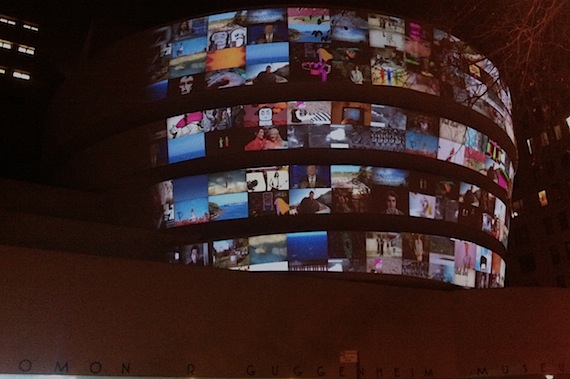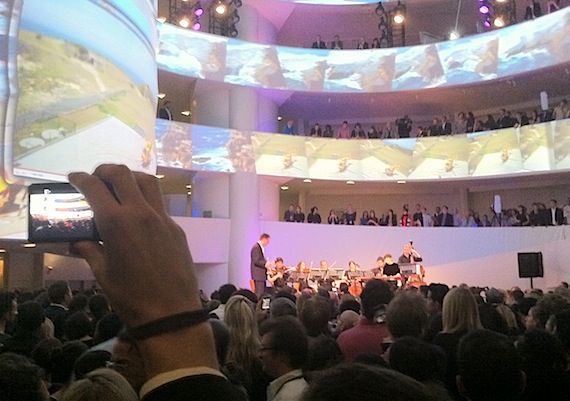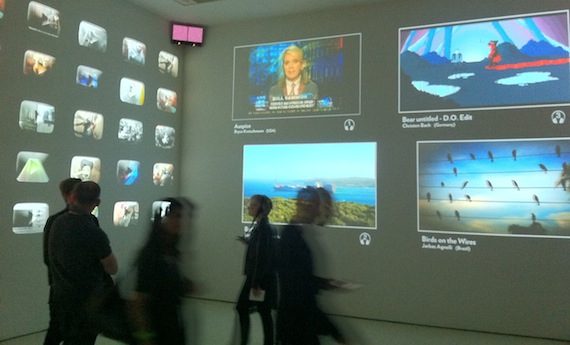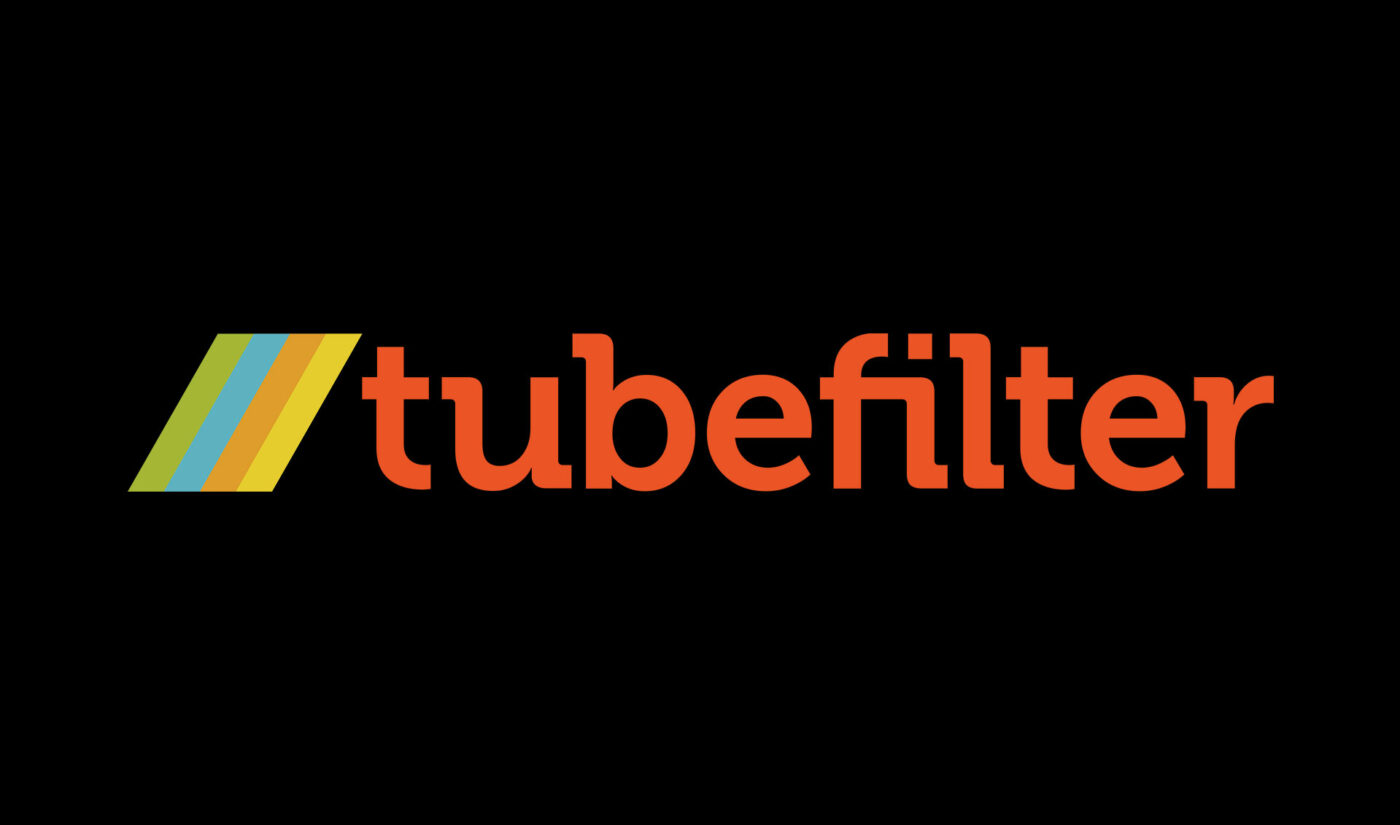YouTube Play is a collaboration between the world’s largest video-sharing site, the Guggenheim Museum, HP, and Intel. The companies and art institution asked online video creators to submit works of “animation, motion graphics, narrative, non-narrative, or documentary, music videos and entirely new art forms – creations that really challenge the world’s perceptions of what’s possible with video.”
Out of the 23,348 videos received, Guggenheim’s curatorial team narrowed those down to a shortlist 125 videos long, which YouTube Play’s renowned jury then cut to 25. Those 25 selections were displayed in a special YouTube Play Exhibit at the Guggenheim Museum last weekend in New York City.

Subscribe for daily Tubefilter Top Stories
YouTube had a party to celebrate the collaboration, the art, and the artists. Here’s what I learned by attending:
Frank Lloyd Wright designed the Guggenheim Museum for digital projections.
I haven’t looked through Wright’s 700 sketches and six complete working drawings of the Guggenheim he created over a 15 year period, so I can’t be certain, but I’m pretty sure he designed the museum specifically so YouTube could project digital images onto it.

The building’s exapandable sippy cup exterior, winding rotunda, and smooth white walls make for the perfect canvas. Seeper, the best architectural projection mappers in the business, could have done a better job than the YouTube crew, but not by much. All the videos looked great.
YouTube can fill a room.
Over two years ago, YouTube held an exclusive upfront event in NYC dubbed Videocracy. It was a dog and pony show for the site to showcase its big name talent and celebrities to a room full of advertisers who were (and still are) hesitant to spend serious ad dollars on original online video. Anderson Cooper, Esmee Denters, Lisa Nova, Soulja Boy, the Pachelbel’s Canon guitar dude, the Will it Blend? guy and others took center stage to a full house at Terminal 5. Here’s a video of the scene.

YouTube Play was just as packed. The crowd at the Guggenheim was elbow to elbow from the floor up to the sloping rotunda. Michael Showalter played the role of awkward MC, introducing video artists from around the globe and performance acts like OK Go and The LXD.
Not a whole lot about art.
In a showroom filled with flat screen monitors and more on-the-wall projections, the Guggenheim displayed videos of the 25 YouTube Play finalists on continuous loops. Museum goers grabbed a headset, walked in front of the videos, tuned their headsets to the channel indicated on screen, and heard audio from whatever selection it was they were watching. The display was certainly impressive, but I’m not sure how conducive a museum setting is to consuming several short-form videos, all in a row.

YouTube Play was intended to elevate online video’s status and place it on the level of high art. It succeeded in that it brought attention to a new art form enabled by the democratization of the tools of video production, but a homogeneous exhibit in a bricks and mortar location didn’t do the art form justice.
A savvy museum curator needs to exhibit online video art alongside masterpieces of sculpture, paintings, and other mediums in order for critics and the general public to award it with equal status. Or, like art itself, maybe the idea of museums needs to evolve.








